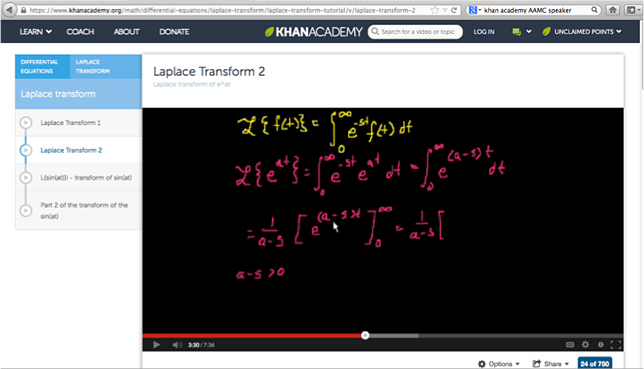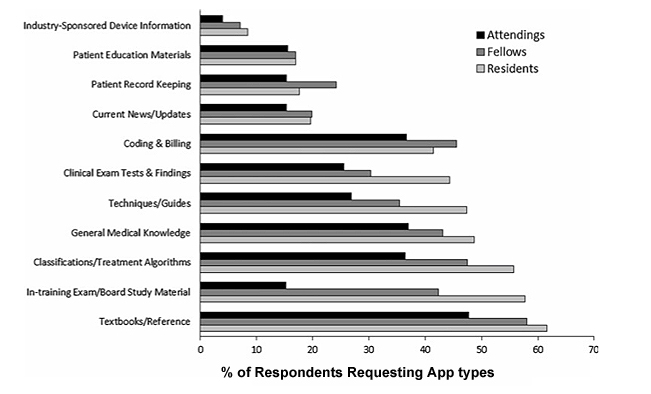Introduction
The expanding volume of medical knowledge and the increasing complexity of the health care system are imposing more challenges on the teacher and learner in medicine. Finding time to teach the expanding medical field when medical school curricula are already packed with conventional material is challenging. Traditional models of teaching have not been able to catch up with such changes. Therefore, emerging new teaching methods that incorporate technologies in education have been implemented. E-learning and the use of Smartphone applications are just few examples of such technologies.
E-Learning:
The use of E-learning in medical education continues to increase in an exponential fashion. E-learning is defined as the use of Internet technologies to enhance knowledge and performance. It involves distant learning and computer-assisted instruction, especially to learners who are at remote locations from the central teaching site. Other alternative terms include online learning, computer assisted instruction, and Internet-based learning.1 Multiple studies have looked into the impact on participants’ assessments and knowledge. A meta-analysis by Cook and others summarized studies on the educational effects of Internet-based learning supplemented courses for health professions. It showed an overall positive effect on knowledge and skills outcome.2 A multi-institutional randomized controlled trial examined the effect of using web-based teaching cases in medical students’ urology rotation. There were improvements in test scores, amount of learning per a unit of time (learning efficiency) and learning durability after 4.8 months.3
The number of E-learning resources available to educators has been increasing. Examples include the Association of American Medical Colleges' (AAMC) MedEdPortal, which is a repository for curriculum and assessment materials that are up-to-date and peer-reviewed and could be used for both teaching and assessment. The Health Education Assets Library has a collection of over 22,000 freely available digital materials for health sciences education.1 Another well-known example is Khan academy, which is an educational non-profit organization that has over 3000 educational videos available for free viewing with variable topics such as algebra, arts, and science (fig. 1).4 It was also built to implement the teaching model of ‘flipped classroom’. The flipped classroom model had been defined as a curriculum in “which students absorb an instructor’s lecture in a digital format as homework, freeing up the class time for a focus on application, including emotion-provoking simulation exercises”.5 In other words, the flipped curriculum is a model with two steps. The first step, the students get a pre-class assignment; which is usually a set of lectures that is delivered online. In the second step, the teachers use the class-time to be able to apply the lectures’ material via active learning and interactive exercises.

Fig 1. A screen shot from an educational physics lecture from the Khan Academy website (www.khanacademy.org).
Smartphone Applications:
According to industry estimates, by 2015 around 500 million Smartphone users worldwide will be using a health care application. The estimates indicate that by 2018, around 50% of more than 3.4 billion Smartphone and tablet users will have downloaded mobile health applications.6 We all agree that Smartphone use is increasingly integrated in the daily practice of medicine. Smartphone applications are used in the form of efficient medical communication, research, diagnostic and reference tools, and even in patient monitoring and examination. Currently, Smartphone applications that could be used as medical devices, usually for patient assessment, are under the process of regulation by the FDA.6
A digital survey research had estimated that 85% of medical providers working in Accreditation Council for Graduate Medical Education training programs reported use of the Smartphone.7 In the same survey, the apps that were considered to be the most requested included textbook/reference materials, classification/treatment algorithms and then general medical knowledge (fig. 2). In one of the United Kingdom healthcare regions, an online survey about the use of Smartphone apps was completed by 257 medical students and 131 junior doctors.8 79% of medical students owned a Smartphone with the majority having 1 to 5 medical apps followed by 6 to 11 and few up to 15 apps or more. The most popular apps used among medical students were disease diagnosis and management as well as drug reference apps. Future apps ideas were suggested by the students and included apps linked to the student’s respective organizations. For example, apps that integrate their timetable, lectures, and modules objectives in a way that tells them: “where they should be and when” as well as “what they should be learning” on the go and without having to stop. Some of the negative aspects that students raised are: not everyone can afford a Smartphone and some of the high quality apps are expensive. A suggested solution was for the organization to provide the Smartphones and free access to apps. Another concern raised by the students and junior doctors is that using Smartphones while in the ward is viewed as inappropriate to patients and colleagues. This is a common cultural view toward Smartphone and technology that needs to be changed.

Fig 2. The percentage of physicians requesting each app category and the variation among residents, fellows and attendings request (Franko et al 2012, with permission).
A good summary of healthcare Smartphone applications can be found in a systemic review by Mosa and others from the University of Missouri Informatics Institute (available as free full-text).9 Please refer to Appendix II, tables 3 to 11, which represent a total of 57 chosen applications for healthcare professionals divided in: drug reference apps, medical calculators, literature search apps, clinical communication apps, hospital information system client apps, medical training and general healthcare apps, and medical and nursing students apps. The tables summarize the applications names, supported operating system platforms, price, and description and functionalities.
Conclusion:
The above are only a few examples of technologies used in medical education. Incorporating E-Learning in new models of teaching such as flipped-curriculum and the use of Smartphone applications are two learning modalities that seem to be attractive and growing among medical students. As research in the use of such technologies is limited, we continue to need further validation and evidence-based studies. This would enable us to recommend more specific and validated E-learning materials as well as Smartphone apps to be used in medical education.
References
- Ruiz JG et al. “The Impact of E-Learning in Medical Education” Acad Med 2006; 81: 207-212.
- Cook, DA et al. “Internet-Based Learning in the Health Professions A Meta Analysis” JAMA 2008; 300(1): 1181-1196.
- Kerfoot BP et al “A Multi-Institutional Randomized Controlled Trial of Adjuvant Web-Based Teaching to Medical Students” Acad Med 2006; 81: 224-230.
- Khan Academy. (March 2014).www.khanacademy.org
- Prober CG, Heath C. Lecture halls without lectures--a proposal for medical education. N Engl J Med. 2012 May 3;366(18):1657-9
- U.S. Food and Drug Administration. (March 2014).Mobile Medical Applications.
- Franko et al. Smartphone app use among medical providers in ACGME training programs. J Med Syst. 2012 Oct;36(5):3135-9.
- Payne et al. Smartphone and medical related App use among medical students and junior doctors in the United Kingdom (UK): a regional survey. BMC Med Inform Decis Mak. 2012 Oct 30;12:121.
- Mosa et al. A systematic review of healthcare applications for smartphones. BMC Med Inform Decis Mak. 2012 Jul 10;12:67.
Reviewed for April 2014 by
Aisha Ahmad AA Yousuf, MD
Obstetrics and Gynecology Department,
Sidra Medical and Research Center,
Doha, Qatar.